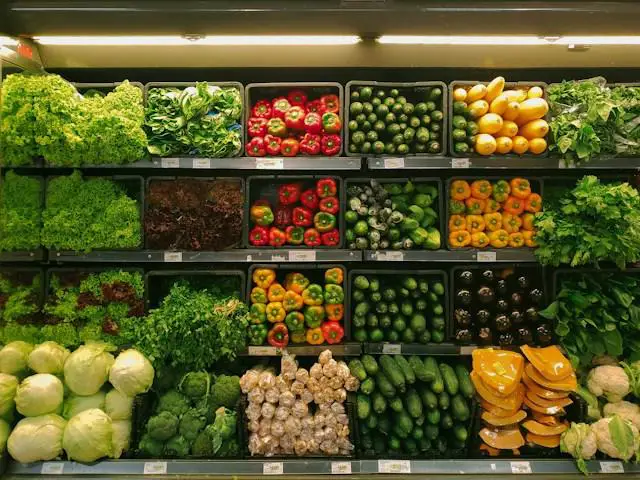The Complete Guide to Selecting the Best Cash Crops for Small Farms in 2024
In the heartland of agricultural tradition, where rolling fields stretch as far as the eye can see, small farms stand as beacons of hope, vitality, and sustainability. In this age of ever-increasing food demand, small-scale farming has emerged as a vibrant force that not only feeds communities but also fuels local economies and supports a healthier planet. The backbone of these thriving small farms lies in their ability to cultivate cash crops that translate directly into income.

But how do these farming visionaries decide which crops to sow? How do they transform their limited land resources into a profitable venture? This is where the art of selecting the right cash crops comes into play, and the choices made can be the difference between prosperity and struggle.
This article serves as your comprehensive guide, your compass through the labyrinth of crop selection, and your key to unlocking the potential of your small farm. Together, we will delve into the world of cash crops, exploring the factors that influence your choices and discovering the crops that promise the greatest return on your investment.
Why Cash Crops Matter for Small Farms
Small farms are the bedrock of agricultural diversity, regional identity, and resilient communities. With their reduced ecological footprint and commitment to sustainable practices, they embody the ethos of responsible farming in an age of environmental challenges. However, their success is not just determined by the size of the land they cultivate; it is also contingent on the crops they choose to grow.
Cash crops, by definition, are those agricultural products that are grown primarily for sale and profit. Unlike subsistence crops, which are cultivated for personal consumption, cash crops are the lifeblood of small farm income. They provide the means to invest in infrastructure, hire labor, and expand operations. In many cases, the success of small farms hinges on the selection of the right cash crops that align with their resources, local climate, and market demand.
The High Stakes of Crop Selection
The stakes are high when it comes to selecting cash crops for your small farm. A well-chosen cash crop can bring substantial profits, while an ill-advised one can lead to financial strain and disappointment. It is not a decision to be taken lightly, as it can shape the trajectory of your farming journey.
We will explore the critical factors that influence your choice of cash crops, such as soil and climate conditions, market demand, and the resources available to you. We will highlight high-value cash crops that promise lucrative returns, high-yield options that maximize productivity, and organic alternatives that cater to the growing demand for chemical-free produce. Moreover, we will delve into the strategies and techniques you can employ to manage pests, mitigate seasonal variability, and thrive in the competitive world of small-scale farming.
So, let’s cultivate your understanding, and in turn, your prosperity.
Factors to Consider Before Choosing Cash Crops

Before you set your hands to the soil and begin sowing the seeds of your small farm’s future, it’s crucial to consider a multitude of factors that can significantly impact the success of your cash crop selections. Making informed choices is the cornerstone of profitability in small-scale farming, and to do so effectively, you must assess the following key factors.
A. Soil and Climate
1. Soil Types Suitable for Different Crops: Soil quality is the bedrock upon which successful crop cultivation stands. Different crops thrive in various soil types, so understanding your soil is paramount. Consider conducting a soil test to assess its pH level, nutrient content, and texture. This data can help you determine which crops will flourish on your land.
2. Climate Considerations for Crop Selection: Climate plays a significant role in crop success. Different crops have varying temperatures, humidity, and rainfall requirements. Ensure you’re well versed in your region’s climate patterns, including frost dates and seasonal variations, to select crops that are well suited to your local conditions.
B. Market Demand
1. Analyzing Market Trends: Staying attuned to market trends is crucial. Investigate which crops are in high demand in your local and regional markets. Consumer preferences can change over time, so regular market research is essential.
2. Identifying Niche Markets: Beyond traditional markets, consider niche opportunities. Specialty or unique crops can often command higher prices. Explore the potential for farmers’ markets, farm-to-table restaurants, or organic produce stores, as these avenues may open up new revenue streams.
C. Farm Size and Resources
1. Matching Crop Choice to Farm Size: Small farms have limited acreage, which must be used judiciously. Select crops that align with your farm’s size, as some crops require more space than others. You may also want to consider crop rotation to optimize land use.
2. Resource Availability (Labor, Equipment, Capital): Assess your resources. Determine how much labor, machinery, and capital you can allocate to your chosen crops. Labor Intensive crops may require more hands-on work, while specialized equipment might be needed for certain crops.Taking the time to evaluate these factors will lay a solid foundation for your cash crop choices. Your soil, climate, market conditions, and available resources are all critical components that can determine the success and profitability of your small farm.
High-Value Cash Crops
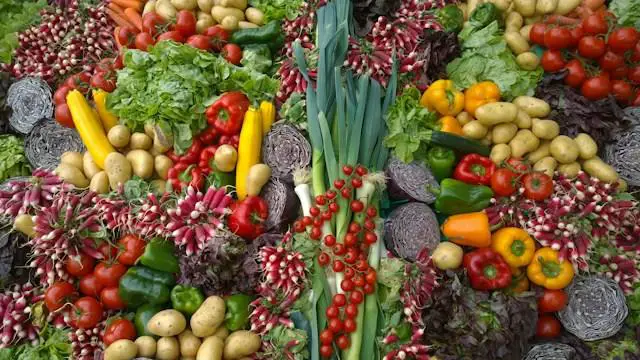
When it comes to maximizing profits on your small farm, high-value cash crops are often the go-to choice. These crops, often associated with higher market prices and increased demand, can be the key to achieving financial success. In this section, we’ll explore a variety of high-value cash crops, providing insights into their cultivation, market potential, and strategies for growing them successfully.
A. Vegetables
1. Tomatoes

Varieties and Cultivation Tips: Tomatoes come in a wide range of varieties, each with unique flavors and uses. Learn about the best tomato varieties for your region and how to cultivate them effectively. Consider organic and heirloom options for niche markets.
Market Opportunities: Tomatoes are a versatile and popular vegetable with high demand. Understanding the various market channels, including farmers’ markets, local restaurants, and grocery stores, can help you maximize profits.
2. Bell Peppers

Growing Methods: Bell peppers require specific care and conditions for optimal growth. Explore the best practices for soil preparation, planting, and maintenance.
Profit Potential: Bell peppers are known for their vibrant colors and versatility in the kitchen. Uncover the potential for higher pricing in your market.
3. Spinach

Soil Requirements: Spinach is a leafy green that has unique soil needs. Discover the ideal soil conditions and nutrients necessary for healthy spinach growth.
Selling to Restaurants and Farmers’ Markets: Explore the opportunities for selling fresh spinach to local restaurants, farmers’ markets, and community-supported agriculture (CSA) programs.
B. Herbs
1. Basil

Growing Techniques: Basil is a versatile herb that’s in high demand. Learn about different basil varieties and how to maximize their yield through proper pruning and care.
Drying and Processing: Basil can also be dried or processed into value-added products like pesto, offering additional income streams.
2. Lavender

Unique Uses and Niche Markets: Lavender is not just a fragrant herb; it has a wide range of uses in cosmetics, aromatherapy, and even culinary applications. Explore niche markets and value-added lavender products.
3. Oregano

Drought-Tolerant Herb: Oregano is a resilient herb that can thrive in challenging conditions. Discover the benefits of growing this drought-tolerant crop.
Diversified Income Streams: Beyond fresh oregano, explore the potential for producing essential oils or dried herbs for sale, allowing for diversified income sources.
C. Specialty Fruits
1. Blueberries

Soil Acidity and Maintenance: Blueberries require acidic soil conditions. Learn about soil pH management and regular maintenance practices.
Market Expansion Opportunities: Explore avenues for expanding your blueberry market beyond fresh sales, such as processing into jams, jellies, or value-added products.
2. Fig Trees

Low-Maintenance Fruit: Figs are relatively low-maintenance fruits and can be a valuable addition to your farm. Understand fig tree care, pruning, and maintenance.
Value-added Products (Fig Preserves, Jams): Beyond selling fresh figs, discover the possibilities of producing preserves, jams, or dried figs, which can extend your income opportunities.
3. Elderberries

Medicinal Uses and Health Trends: Elderberries have gained popularity for their potential health benefits. Explore the medicinal uses and market trends associated with elderberries.
Processing for value-added Products: Elderberries can be processed into syrups, supplements, and other value-added products, which can significantly boost your profits.
High-value cash crops offer small farmers an opportunity to increase their income and thrive in the competitive agriculture industry. By carefully selecting and cultivating these crops, you can tap into markets willing to pay a premium for quality, unique, or in-demand produce.
High Yield Cash Crops
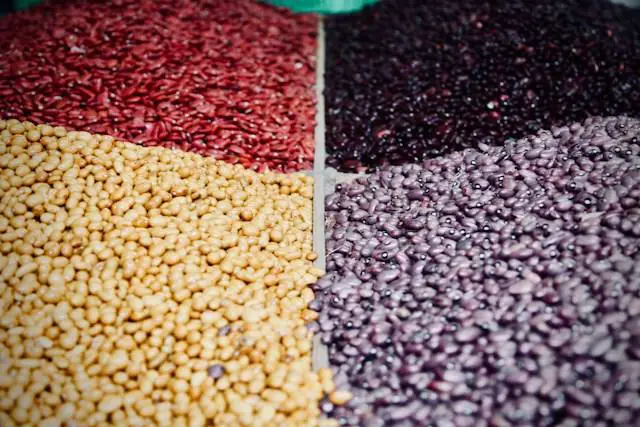
In the quest for profitability and sustainability on small farms, high-yield cash crops play a pivotal role. These crops are known for their ability to produce bountiful harvests, ensuring a steady flow of income. In this section, we will delve into high-yield cash crops, offering valuable insights into their cultivation, potential returns, and the strategies that can help you optimize your yields.
A. Grains
1. Wheat
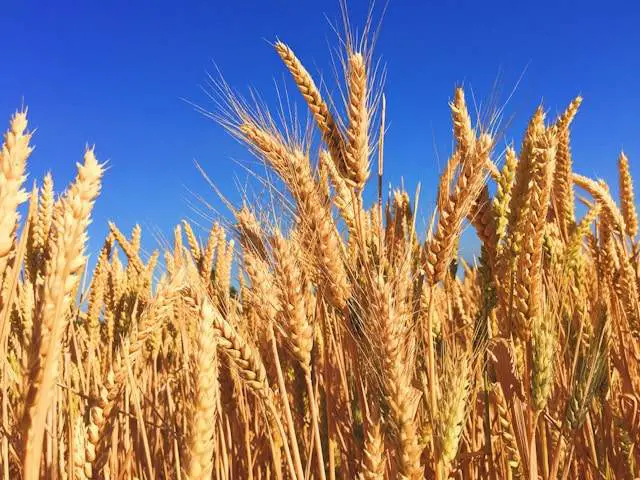
Varieties and Growth Stages: Wheat is a staple grain with diverse varieties. Understand the growth stages and optimal conditions for different wheat varieties.
Milling and Distribution: Exploring wheat milling and distribution channels can open up new revenue streams, from flour production to direct sales to bakeries and local markets.
2. Quinoa
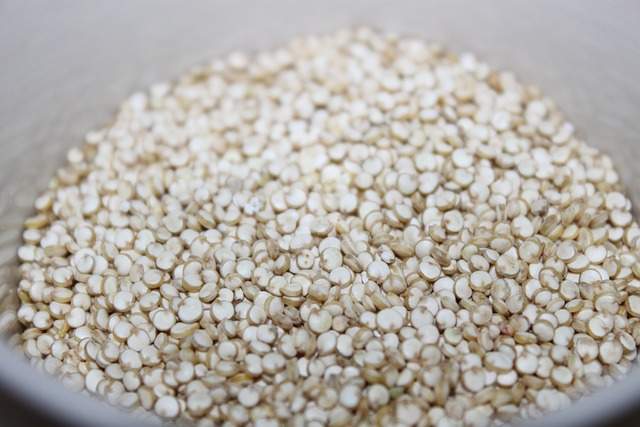
Nutritional Value and Market Demand: Quinoa is celebrated for its nutritional value. Learn about the market demand for this superfood and how to grow it successfully.
Drought Resistant Crop: Quinoa’s adaptability to arid conditions makes it a high-yield option even in water-scarce regions.
B. Legumes
1. Soybeans
Crop Rotation Benefits: Soybeans offer crop rotation benefits by fixing nitrogen in the soil. Explore the advantages of including soybeans in your farming plan.
Marketing to Animal Feed and Food Industries: Diversify your sales channels by targeting the animal feed and food industries. Soybeans have a broad range of applications beyond direct human consumption.
2. Lentils
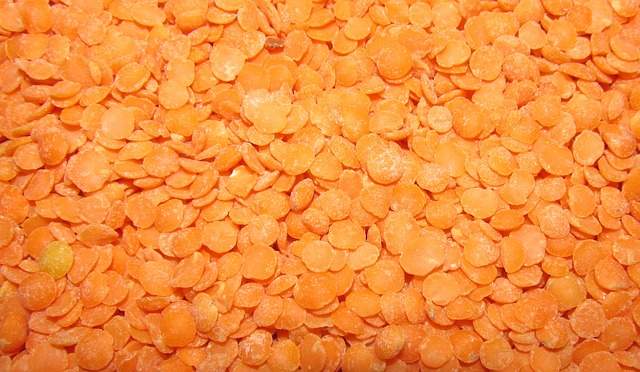
Low Input Crop: Lentils are known for their ability to grow with minimal input. Discover how this low-maintenance crop can maximize your yields.
Export Opportunities: Lentils are globally traded commodities. Explore the potential for exporting your lentil harvest to international markets.
C. Industrial Crops
1. Hemp
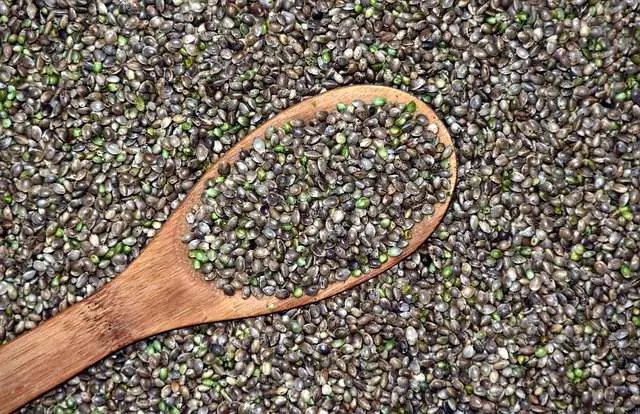
Legal Considerations: Before cultivating hemp, understand the legal landscape in your region, as regulations may vary. Compliance is crucial for a successful hemp venture.
Versatile Applications (Fiber, Oil, CBD): Hemp offers versatile revenue streams through the extraction of fibers, oil, and CBD products. Discover the opportunities in each sector.
2. Sunflowers

Oilseed Production: Sunflowers are renowned for their oil-rich seeds. Learn about sunflower cultivation for oil production and explore the market potential for sunflower oil.
Sunflower Seeds as a Snack Product: Sunflower seeds are popular snacks. Understand the process of preparing and packaging sunflower seeds for sale.
High-yield cash crops are essential for small farms looking to maximize productivity and income. By focusing on crops that are known for their ability to produce substantial harvests, you can work towards greater financial stability and growth.
Organic Cash Crops
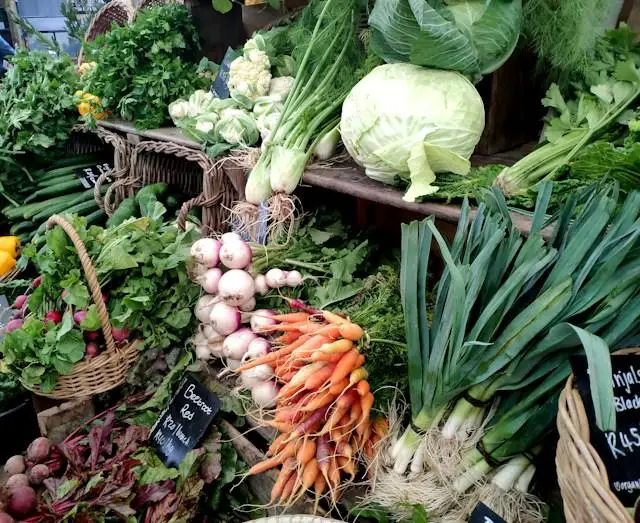
The organic farming movement has gained substantial momentum in recent years, driven by increasing consumer demand for chemical-free, sustainably grown produce. Small farms are well-positioned to meet this demand, and cultivating organic cash crops can be both environmentally responsible and financially rewarding. In this section, we will explore various organic cash crops, their unique requirements, market potential, and the advantages of embracing organic farming practices.
A. Organic Certification
1. Requirements and Process: To label your crops as organic, you must adhere to specific requirements and undergo certification. Understand the steps and regulations involved in obtaining organic certification.
2. Market Premium for Organic Products: Organic products often command higher prices in the market. Learn about the economic benefits of organic certification and the premium you can charge for organic produce.
B. Organic Crops
1. Organic Tomatoes
Pest Control Methods: Organic tomato farming involves natural pest control techniques, such as companion planting and beneficial insects. Explore eco-friendly ways to protect your tomato crop.
Access to Organic Markets: Discover the market opportunities available for organic tomatoes, including organic grocery stores, restaurants, and direct-to-consumer sales.
2. Organic Lettuce
Soil Fertility and Pest Management: Organic lettuce production relies on soil fertility and integrated pest management. Learn about organic approaches to nutrient-rich soil and pest control.
HighValue Organic Consumers: Explore the growing market of health-conscious consumers seeking organic lettuce and the potential for selling through organic cooperatives.
3. Organic Berries
Pesticide-Free Cultivation: Organic berries require pesticide-free cultivation methods. Explore techniques such as crop rotation and natural predators to protect your berry crops.
Demand for Organic Berries in HealthConscious Markets: Organic berries appeal to consumers looking for pesticide-free, healthy options. Understand the market potential and opportunities in the organic berry sector.
Organic cash crops present a significant opportunity for small farms. By adhering to sustainable and chemical-free farming practices, you can tap into a growing market of environmentally conscious consumers. Organic certification not only allows you to access premium pricing but also contributes to the health of your land and community.
Crop Rotation Strategies

Crop rotation is a time-honored agricultural practice that holds immense benefits for small farms. By intentionally alternating the crops you cultivate on your land from one season to the next, you can enhance soil health, reduce the risk of pests and diseases, and ultimately increase your overall yield. In this section, we will delve into the world of crop rotation, providing detailed insights into its advantages, principles, and practical implementation.
A. Benefits of Crop Rotation
1. Improved Soil Health: Crop rotation helps maintain soil fertility and structure. Different crops have varying nutrient requirements, and rotating them can prevent the depletion of specific nutrients in the soil. For example, legumes like soybeans can fix nitrogen, enriching the soil for subsequent crops.
2. Pest and Disease Management: Crop rotation disrupts the life cycles of pests and pathogens that target specific crops. For instance, if you alternate between tomatoes and non-solanaceous crops (e.g., legumes), you can reduce the risk of soilborne diseases like verticillium wilt.
3. Weed Suppression: Crop rotation can also help control weeds. By planting crops with different growth habits and canopy structures, you can disrupt weed development and limit their impact on your fields.
B. Ideal Crop Rotation Schedules for Small Farms
1. Two-Year Rotation: A simple rotation cycle involves two different crops over two years. For instance, you could plant corn one year and follow it with soybeans the next. This approach can help break pest cycles and reduce the depletion of specific nutrients.
2. Three-Year Rotation: A three-year rotation extends the cycle to include three different crops over three years. For example, you might rotate wheat, followed by clover or other legumes, and then finish with corn. This cycle further enhances soil fertility and pest management.
3. Four-Year Rotation: A four-year rotation can provide even greater benefits. Consider a rotation that involves potatoes, followed by barley, then legumes like peas, and finish with a cover crop such as rye. This extended rotation enhances soil structure, nutrient cycling, and resilience against pests.
C. Integrating Cover Crops and Green Manures
1. Cover Crops: In between cash crops, consider planting cover crops like clover, rye, or vetch. Cover crops protect the soil from erosion, improve its organic matter content, and help fix nitrogen.
2. Green Manures: Green manures are cover crops that you till back into the soil, adding organic matter and nutrients. They can serve as a valuable source of nitrogen and other essential elements for your cash crops.
Crop rotation is a proven technique for enhancing soil health, reducing pest pressure, and optimizing yields on small farms. The specific rotation schedule you choose will depend on your farm’s size, climate, and the crops you wish to cultivate. By incorporating cover crops and green manures into your rotation plan, you can further boost the productivity and sustainability of your agricultural venture.
Marketing and Sales Strategies

Effective marketing and sales strategies are pivotal to the success of small farms. No matter how exceptional your cash crops are, reaching the right audience and converting interest into sales is a key challenge. In this section, we’ll explore various marketing and sales strategies that can help you promote your products and achieve financial success on your small farm.
A. Farmers’ Markets
1. Setting Up a Booth: At farmers’ markets, presentation is crucial. Learn how to design an attractive and engaging booth that showcases your produce effectively. Consider using signage, product displays, and attractive packaging to catch the eye of potential customers.
2. Building Customer Relationships: Building relationships with customers is a cornerstone of success at farmers’ markets. Engage with your customers, share information about your farming practices, and provide exceptional customer service to foster trust and loyalty.
B. Community Supported Agriculture (CSA)
1. Subscription Models: CSA programs often operate on a subscription model where customers commit to purchasing a share of their farm’s produce. Learn how to set up and manage a CSA program, including pricing, scheduling, and distribution.
2. Diversifying CSA Offerings: Explore the potential for diversifying your CSA offerings. Beyond vegetables, you can include items like fruits, herbs, or value-added products. This flexibility can attract a wider range of customers.
C. Online Sales
1. Creating a Website: In the digital age, an online presence is essential. Discover how to create a user-friendly website that showcases your products, shares your farm’s story, and allows for easy online ordering.
2. Leveraging Social Media for Online Sales: Social media platforms can be powerful tools for reaching a broader audience. Learn how to utilize platforms like Facebook, Instagram, and Pinterest to promote your products and engage with potential customers.
D. Packaging and Branding
1. Effective Packaging: Packaging plays a crucial role in product perception. Explore best practices for packaging your products, including eco-friendly options, labeling, and branding to stand out in the market.
2. Branding Your Farm: Building a brand identity for your farm can help you create a distinct and memorable image in consumers’ minds. Learn how to develop a compelling farm brand that tells your story and resonates with your target audience.
E. Value-added Products
1. Processing and Preserving: Value-added products, such as jams, sauces, or dried herbs, can diversify your product range and increase sales. Understand the process of creating and marketing these products.
2. Labeling and Compliance: Ensure that your value-added products comply with local regulations. Proper labeling, nutritional information, and transparent ingredient lists are crucial for legal and consumer trust.
Effective marketing and sales strategies are essential for small farms looking to thrive in competitive markets. By understanding the nuances of various sales channels, from farmers’ markets to online platforms, and by leveraging branding and value-added products, you can reach a wider audience and boost your farm’s profitability.
Challenges and Solutions
While the world of small-scale farming is filled with promise, it also presents unique challenges that can test the resilience and ingenuity of farmers. In this section, we will explore some common challenges faced by small farms and provide practical solutions to overcome them, ensuring that your farming journey is as smooth and successful as possible.
A. Pest and Disease Management
1. Integrated Pest Management (IPM): Small farms can face substantial losses due to pests and diseases. Implementing IPM strategies, such as biological control and crop rotation, can help minimize the use of chemical pesticides and maintain a healthy ecosystem on your farm.
2. Resistant Crop Varieties: Selecting crop varieties with built-in resistance to common pests and diseases can reduce the need for chemical interventions. Explore options for crops that are naturally resilient to local challenges.
B. Seasonal Variability
1. Extending the Growing Season: Seasonal limitations can be a hindrance to small farms. Implement techniques such as high tunnels, greenhouses, or row covers to extend your growing season and enhance year-round productivity.
2. Diversifying Crops for Year-Round Income: To mitigate the impact of seasonality, diversify your crop selection. By growing both summer and winter crops, you can ensure a more stable income throughout the year.
C. Financial Management
1. Budgeting and Cost Analysis: Effective financial management is crucial. Create a comprehensive budget that includes all expenses, from seeds and equipment to labor and marketing costs. Regularly review your budget to ensure you stay on track.
2. Securing Grants and Subsidies: Many governments and organizations offer grants and subsidies to support small farmers. Explore available programs and opportunities in your region to access financial aid that can boost your farm’s capital.
By addressing these common challenges through effective strategies and solutions, small-scale farmers can build resilient and sustainable agricultural businesses. With careful management of pests and diseases, innovative solutions for seasonal variability, and sound financial planning, you can navigate the obstacles of farming and focus on growing your success.
Final Thoughts
Small-scale farming is an art that combines tradition, science, and dedication, offering an inspiring journey for those who embark on it. In this comprehensive guide, we’ve explored the essential elements that can transform your small farm into a thriving, sustainable, and profitable enterprise. From the careful selection of cash crops to the implementation of effective marketing strategies, your journey as a small-scale farmer is filled with potential and opportunities.
As you consider the wealth of information presented in this guide, remember that the key to your success lies in knowledge, adaptability, and commitment. By understanding the factors that influence your choice of cash crops, such as soil quality, climate conditions, and market demand, you lay a strong foundation for your farm’s prosperity. High-value, high-yield, and organic cash crops offer distinct advantages, enabling you to tailor your crop selection to your farm’s unique circumstances.
Effective crop rotation strategies enhance soil health, reduce pest pressure, and optimize your yields. Leveraging marketing and sales strategies, such as farmers’ markets, CSA programs, and online sales, empowers you to reach a broader audience and convert interest into sales. The use of branding, packaging, and value-added products can further distinguish your farm in a competitive market.
Of course, the path of small-scale farming is not without its challenges, from pest and disease management to seasonal variability and financial hurdles. Yet, by implementing integrated pest management practices, extending the growing season, and adopting sound financial management techniques, these obstacles can be overcome.
In conclusion, the world of small-scale farming holds a universe of possibilities for those who are willing to embrace its challenges and rewards. Your role as a small farmer is not only to provide nourishment to your community but also to contribute to the sustainability of the planet. The choices you make in selecting and cultivating your cash crops, managing your farm’s resources, and connecting with your customers are pivotal in shaping a future that is both fruitful and sustainable.
With dedication, a thirst for knowledge, and an unrelenting passion for the land, you can build a small farm that not only sustains your livelihood but also enriches the lives of those you feed. As you embark on your journey into the world of small-scale farming, remember that each day in the field is an opportunity to grow, learn, and contribute to a brighter and more sustainable future.
Welcome to the world of small-scale farming, where every seed sown and every harvest reaped represents a step toward a greener, healthier, and more prosperous future.

